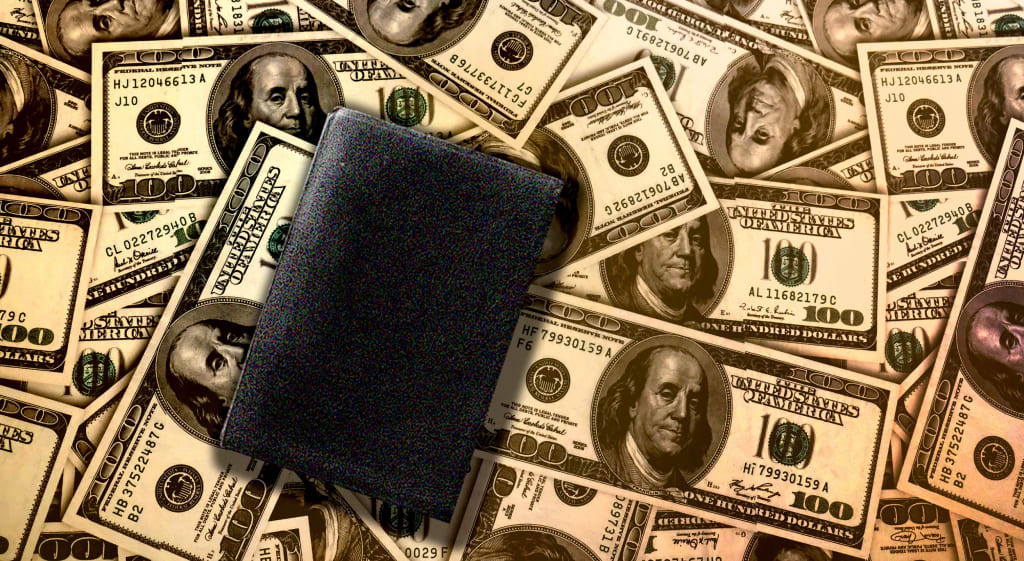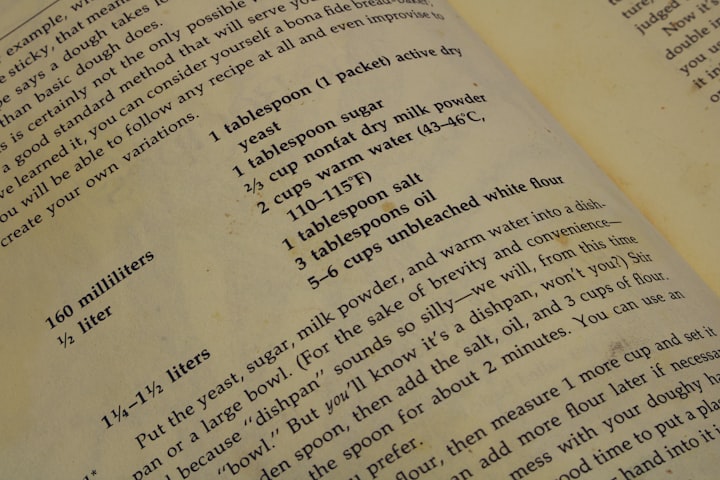
Edward B. Farber
Words: 1,680
The Stash in the Attic
She reached into the cloth shopping bag, pulled out a wad of money, counted out five $100 bills and laid them on my desk.
“Yours, Mr. Diamond, if you help me find out where this and the rest of the money came from,” she said.
“You’re much too young to be a bag lady,” I quipped. She smiled politely. “Tell me what this is all about, Miss Kelly.”
She was around thirty-five, I guessed, attractive with long, wavy, light brown hair spilling over the collar of her yellow jacket, big hazel eyes that didn’t seem to blink much, no ring on her left hand, and a nice smile. I’m a private detective, see, so I notice details.
She reached back into the bag again and pulled out a little black book.
“This was with the money,” she said.
I peeked inside. In it were handwritten notations that began with October 12, 1935, a long time ago.
“Looks like a home-made bank book showing regular withdrawals,” I said, flipping quickly through the pages. “Ends on February 6, 2004.”
She nodded. “I found that book and a package of money hidden in the house I bought this year from the city. I’m rehabbing it. The previous owner was a Martin Jones who died in 2004. The city took it over for back taxes, and it’s been decaying ever since. I was tearing up some flooring in the attic and found a hidden bundle there wrapped in oilcloth. The money was in it, $20,000 to be exact, mostly in $100 bills just like those. First, I want to know if they are real, not counterfeit, and second, if I can keep it or need to return it to someone.”
The bill I picked up looked real enough. The picture on it was Benjamin Franklin, same as every $100 bill I ever saw, and there were few of those. I looked for the series and date. In the lower right-hand area it read: 1934 Series C. I checked the other bills. All were the same date although the series changed. I don’t know much about old currency, but I did know where to go to get expert information.
“Look,” I said, “I charge fifty bucks an hour. I doubt if I’ll spend ten hours on your case, but I’ll look into it. Leave the little black book, just give me two of those bills for a retainer, and we’ll settle up later.” Why’d I do that, I thought? Must have been those big, hazel eyes looking at me. She filled out the information sheet I handed to her, and I gave her a receipt for the $200.
“I’ll be in touch when I have something to report,” I said escorting her to the door of my office. “And, you know, if those bills are counterfeit, I’ll need real ones.”
She smiled again. We shook hands, and she walked down the corridor to the elevator.
While it was fresh on my mind, I called my cousin, Leo, who was into collecting coins and old money. We made a date for lunch in half an hour. By the time I slid into the booth at Denny’s, Leo was already there. He’s about as geeky looking as one can get but owns a black belt in Karate. I wouldn’t mess with him even though I’m a head taller and outweigh him by thirty pounds. The only thing we have in common is our rust-colored hair, a family trait.
“What can you tell me about this?” I handed him the C-note after we ordered.
“Ah, it’s a 1934 Benjamin, green seal, still pretty common but this one is in very fine circulated condition,” Leo said after looking closely at the bill.
“Counterfeit?”
“Looks legit to me, but I’m no expert on that. I can have Harry check it out. I’ll drop it off on my way back to my office.” Harry Ward was a friend in the police department at the local precinct.
“Okay, but I’ll need it back in a day or two. Would it be worth more than a hundred bucks today because it’s so old?”
“Yep, in this condition you can probably get between $130 and $150 for it. It’s quite collectable.”
“What if you had many more of these?”
“You rob a bank or something? If I had a lot of these notes, I’d peddle them slowly to the companies who buy them for resale to collectors. Or take them to different coin shops, one or two at a time. Rarity is what keeps the price up. Or spend them like you would any $100 bill. They’re legal currency.”
After lunch, I thanked Leo, picked up the check and said our farewells. I had a little more to do. I needed to get information on Karen Kelly’s old house. Who would have hidden the cash there? It could have been the last of the owners prior to Martin Jones or Martin himself. But why?
At City Hall, I researched title records for that house. It had been built initially by one Herman Rothmann in 1889 and was lived in continuously by Rothmann offspring until sold to Virgil Jones in October of 1935. The last Rothmann resident was Miss Rachel Rothmann. It was either Rachel or Virgil since the $100 bills were dated 1934. This required more sleuthing.
On a hunch, I stopped by the station where Sgt. Ward hung out.
“Jake Diamond,” he said when I walked up to his desk. “I had our counterfeit expert look at this bill of yours. Not counterfeit.”
“Good news,” I said pocketing the bill, “but I’m here on a different matter. I want to look up a Virgil Jones to see if he had a criminal record. He’s past tense now but was active in the 1920’s.”
“Here he is,” Ward said after working the computer system. “Virgil, it says, was a petty thief in the mid-1920s, busted in 1927 and spent seven years in the penitentiary. No other record.”
My hunch had been right on the money, so to speak. I thanked Harry and made my way over to the public library. Virgil would have been released from jail in 1934. I got the microfiche films for the City’s newspapers starting in 1934. There were three newspapers at the time. I began with the smallest, the Star-Times and made my way through to January of 1935. That’s when I hit on what could be the answer to all of Miss Kelly’s questions.
There had been a series of bank robberies beginning the month of January and ending that summer. The unknown robber was tagged “The Red Bandana Bandit” by the covering reporter because he wore a red bandana over his face. This was before cameras were installed. No photos, only descriptions by bank people and customers. But the Red Bandana Bandit made quite a haul in seven consecutive robberies in all parts of the city and outlying county. It was estimated that the total amount stolen was more than $200,000, quite a sum in the Depression era.
Could that bandit be our Virgil? It fits, I thought. Needs some more corroboration. I dug the little black book out of my pocket and turned to the first page. The initial balance entry was $196,000 dollars. The first withdrawal was October 11, 1935, a sum of $8,000. I pulled out my own little notebook and looked up my notation on Virgil’s purchase of the house where Karen Kelly now lived. The amount was $6,750. Purchase date, October 12, 1935. Virgil must have paid cash for the house and had a little spending money left over.
Yes, I thought, it all fits quite well. So, it was probably Virgil who hid the money. I looked closely at all the pages in the little black book, and then I was convinced I had the entire answer. A little more research on Virgil and Martin, and I would get back to Miss Kelly with the hazel eyes.
Her house in the Lafayette Square area was a handsome, three-story residence topped by the attic where the money had been hidden. She showed me her handiwork so far, and I was impressed. Miss Kelly was quite the rehabber. We went to the attic, and she pried up the floorboard section that still contained the money. It was the safest place to hide it, she explained, where it had been for so many years.
“That money belonged to Martin Jones’ father, Virgil, “I said. “It was loot from bank robberies.” I showed her copies of the articles about the Red Bandana Bandit. “Since he’d never been identified, I suppose he decided to settle down and lead an honest life with the loot he had stolen. I found a marriage license from 1935. Had a son, Martin, the next year. Wife died that year, probably in childbirth. Virgil died in 1979.”
“But the last entry in the little black book was in 2004? How could that be?”
“Look here,” I said showing her an entry in the little black book. “The handwriting changes. My guess is that Virgil told Martin about the money when he was ill and dying, or maybe earlier, and Martin decided to keep his father’s secret and have a little extra spending money. I checked, and Martin was listed in city directories as an investor. Apparently, he drew out the money only as needed for buying stocks and bonds. He never married. No heirs anywhere to worry about, so the money is untraceable and yours.
“By the way,” I added, “those bills might be worth more than $100 each, so, don’t splurge. Sell them to collectors or coin shops, and you’ll have tax-free dough for as long as you need it. I suggest you put it all back under that floorboard and spend it wisely so as not to raise suspicion with the IRS. Here’s Virgil’s little black book if you want to continue the withdrawals.”
Oh, how those hazel eyes beamed.
The End
About the Creator
Edward Farber
Published books: Echoes of Clara Avenue, a short story collection, Looking Back with a Smile, humorous memoir, The Man on the Stairs, four short stories, and Baron & Brannigan, Book 1, a novel set in the 1890s.Visit www.EdFarberAuthor.com.






Comments
There are no comments for this story
Be the first to respond and start the conversation.